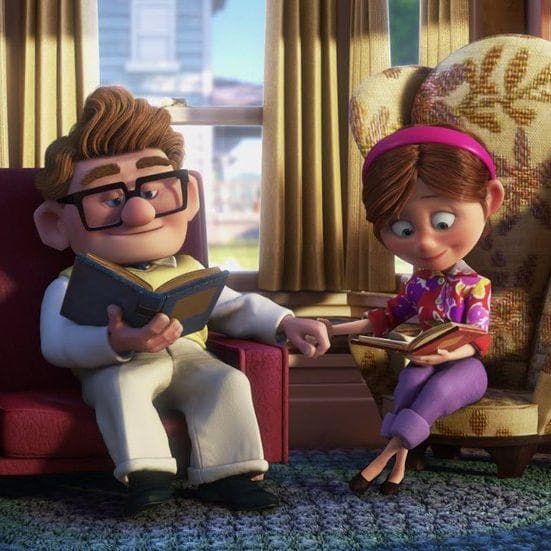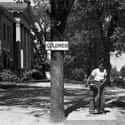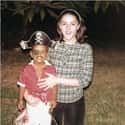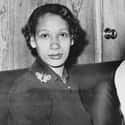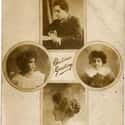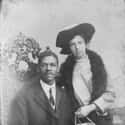(#12) An Anonymous Interracial Couple Fought Segregation To End Laws Against Interracial Sex
In addition to laws banning interracial marriage, many states also made it a crime for people of different races to have intercourse or even cohabitate. In 1964, a brave couple from Florida challenged the law, taking the case all the way to the Supreme Court. In McLaughlin v. Florida, the anonymous couple argued that a state law banning whites and Blacks from living together was unconstitutional.
The unanimous ruling at the Supreme Court declared that laws banning interracial cohabitation or "fornication" were illegal, directly countering the 1883 case of Pace v. Alabama. But it would take three more years before the Supreme Court ruled on interracial marriage.
(#5) Thousands Of Families Were Affected By The 'Loving' Decision — Including Barack Obama's
The Supreme Court decision in Loving v. Virginia didn't just affect Mildred and Richard Loving — it affected thousands of ordinary families who simply wanted to exist. And although no one knew it in 1967, one of those families belonged to a future president.
When Ann Dunham married Barack Obama, Sr. in 1961, their union was only legal because they married in Hawaii — one of only nine states that never declared interracial marriage illegal. The two met while taking a Russian language class at the University of Hawaii. Ann was only 18 years old.
Barack Obama was still a boy when Loving v. Virginia ruled against interracial marriage bans, a decision that made it possible for interracial families to live across the river from Obama's future home––the White House.
(#2) Lucille Ball And Desi Arnaz Caused Network Turmoil Because Of Their Interracial Marriage
I Love Lucy is one of the most iconic TV shows in history — and it almost didn't get on the air because of bigotry. Lucy's biographer, Kathleen Brady, says the network did not want Lucy's husband Desi Ricardo on the show at all. Both "CBS and its sponsor, Philip Morris cigarettes, were adamantly opposed to this. They said that the American public would not accept Desi as the husband of a red-blooded American girl." But Lucille Ball put down her foot, and the rest is history: Lucy and Desi became household names.
CBS was so worried that they insisted on twin beds in the Ricardo bedroom, and even outlawed the word "pregnancy," (as too vulgar) in the episode where Lucy finds out she's expecting. But the show's premier in 1951 as the first television program to feature an interracial couple was a smash hit — perhaps because racists decided the marriage was acceptable because of Arnaz's European heritage.
(#4) Mildred And Richard Loving Were Banned From Virginia Until They Fought All The Way To The Supreme Court
Their name became famous because of Loving v. Virginia, but Mildred and Richard Loving started out as a couple in love. Mildred Jeter met Richard Loving in the 1950s, when both lived in Virginia. Interracial marriage was illegal in their state, so they crossed the border to Washington, D.C. when they got married in June of 1958. But a few weeks later, Virginia charged the couple with breaking the law and sentenced them to one year in jail — or a 25-year ban from the state.
The terrified couple moved to DC, but they were arrested again five years later for visiting Mildred's parents. They wrote to Attorney General Robert Kennedy for help, and a few years later their case was in front of the Supreme Court. On June 12, 1967, the court overturned all bans on interracial marriage, declaring, "Marriage is one of the 'basic civil rights of man,' fundamental to our very existence and survival."
(#10) An Interracial British Couple Faced Discrimination And Tragedy So That Their Children Could Become Distinguished Musicians
In 1899, a British composer named Samuel Coleridge-Taylor married Jessie Walmisley. They wed in a parish church in the English countryside, with Samuel's mentor and Jessie's father present to sign the marriage registration. But this wasn't a typical English wedding: Samuel's father immigrated to London from Sierra Leone, and the Walmisleys were an established English family who vehemently opposed the marriage.
Samuel and Jessie were probably the only interracial couple that most in the English town of Croydon had ever seen. As they walked the streets, gangs would harass the couple. Their daughter later reported, "When he saw them approaching along the street he held my hand more tightly, gripping it until it almost hurt." Samuel and Jessie persisted, with his composing career taking off, until he tragically died from pneumonia at the young age of 37. Their two children went on to have distinguished careers as composers and conductors.
(#8) Louis and Louisa Gregory Fought For Civil Rights But Couldn't Travel Together
Louis Gregory was a prominent lawyer. Louisa Mathew was an educated woman born in England. But when the two married in 1912, they set off a fire storm. Their marriage was illegal in more than half of the states and considered unacceptable across the country. To prevent an outcry, few were invited to the wedding. Louis explained, “We do not wish any sensational newspaper articles written.”
Their marriage was not easy. The two struggled to find a place to live, during the era when Jim Crow laws tried to completely separate Blacks and whites. The Gregorys were warned not to travel together by friends, and when Louis traveled to the South to fight for civil rights, Louise had to stay in New York. The pair didn't live to see Loving v. Virginia––after four decades of marriage, Louis passed away in 1951 and Louisa died in 1956.
New Random Displays Display All By Ranking
About This Tool
In the past, interracial marriage has always been taboo for the Jewish nation, and it was illegal in almost every American state during certain periods. But in the second half of the 20th century, due to the openness of American society, American Jews have become more and more assimilated and integrated into American society, and the intermarriage between Jews and non-Jews has changed. It becomes quite common.
In 1967, the US Supreme Court's ruling in the Loving v Virginia case opened up legal intermarriage between different races (black and white). The random tool shares 12 details about how these trailblazing relationships changed the taboo of interracial marriage.
Our data comes from Ranker, If you want to participate in the ranking of items displayed on this page, please click here.






